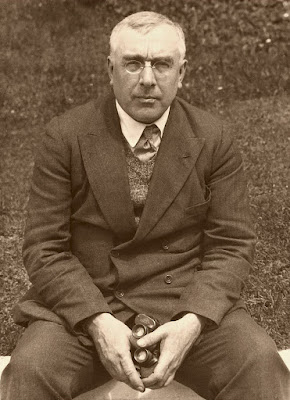The Brutality of Beauty
“No great art has ever been made without the artist having known danger.” ~ Rainer Maria Rilke
The great 19th century Germanic poet, Rilke, knew about danger. He also knew about art as a spiritual practice. In many ways his life's mission was to find beauty in all things. And he also knew about suffering. As brilliant as he was, he often found himself literally at a loss for words—which to a poet is a nightmare.
Rilke struggled throughout his life to achieve something great, not to be famous or rich, but to be able to come up with the perfect words to describe the indescribable. He often anguished for months at a time over just a few words, trying to convey for others, what he knew intimately in his mind.
I think a lot of us artists are much the same way. We can see a complete vision in our heads. It's magnificent, sacred, and unimaginable. But there is a disconnect from our heads to birthing our art in the real world for others to experience:
“Can they really see/hear/feel what I have given them and understand it as I do?”
Knowing Danger
Danger. Many artists dance intimately with danger. Sometimes it's a tango, sometimes it's a slow dance, and other times it's free form, but it's a never ending engagement with our art, with our heart, with our soul.
Danger is exploring new frontiers.
Danger is not following the masses, or doing what everyone else is doing.
Danger is hearing/seeing/feeling something that others are not.
Danger strips us bare and pushes us towards our best work.
Danger taunts us, “You can do better!”
Danger shows us worlds even we could never imagine.
If art really is your spiritual practice, then don't sell yourself short by playing it safe. Choose the danger in your art.
I'll leave you with words from Rilke, taken from his Letters to a Young Poet:
~ MB
The great 19th century Germanic poet, Rilke, knew about danger. He also knew about art as a spiritual practice. In many ways his life's mission was to find beauty in all things. And he also knew about suffering. As brilliant as he was, he often found himself literally at a loss for words—which to a poet is a nightmare.
Rilke struggled throughout his life to achieve something great, not to be famous or rich, but to be able to come up with the perfect words to describe the indescribable. He often anguished for months at a time over just a few words, trying to convey for others, what he knew intimately in his mind.
I may have read a bit of Rilke…
I think a lot of us artists are much the same way. We can see a complete vision in our heads. It's magnificent, sacred, and unimaginable. But there is a disconnect from our heads to birthing our art in the real world for others to experience:
“Can they really see/hear/feel what I have given them and understand it as I do?”
Knowing Danger
Danger. Many artists dance intimately with danger. Sometimes it's a tango, sometimes it's a slow dance, and other times it's free form, but it's a never ending engagement with our art, with our heart, with our soul.
Danger is exploring new frontiers.
Danger is not following the masses, or doing what everyone else is doing.
Danger is hearing/seeing/feeling something that others are not.
Danger strips us bare and pushes us towards our best work.
Danger taunts us, “You can do better!”
Danger shows us worlds even we could never imagine.
If art really is your spiritual practice, then don't sell yourself short by playing it safe. Choose the danger in your art.
I'll leave you with words from Rilke, taken from his Letters to a Young Poet:
I beg you . . . to have patience with everything
unresolved in your heart and try to love the
questions themselves as if they were locked
rooms or books written in a very foreign language.
Don't search for the answers,
which could not be given to you now,
because you would not be able to live them.
And the point is, to live everything.
Live the questions now.
Perhaps then, someday far in the future,
you will gradually, without even noticing it,
live your way into the answer . . .
~ MB




Comments
Post a Comment